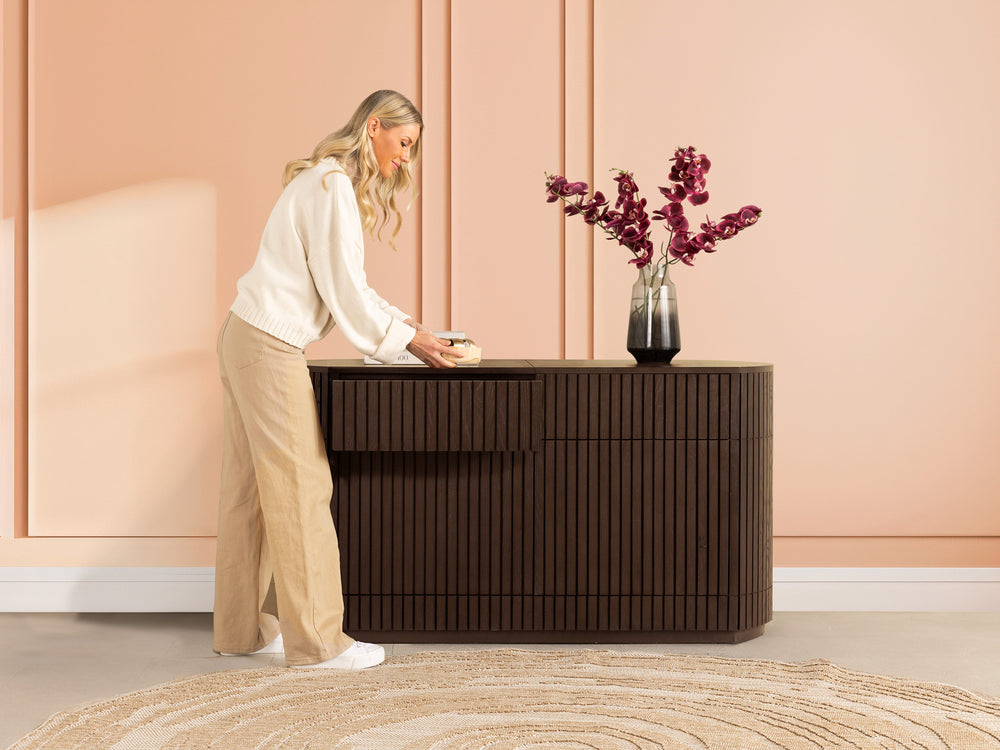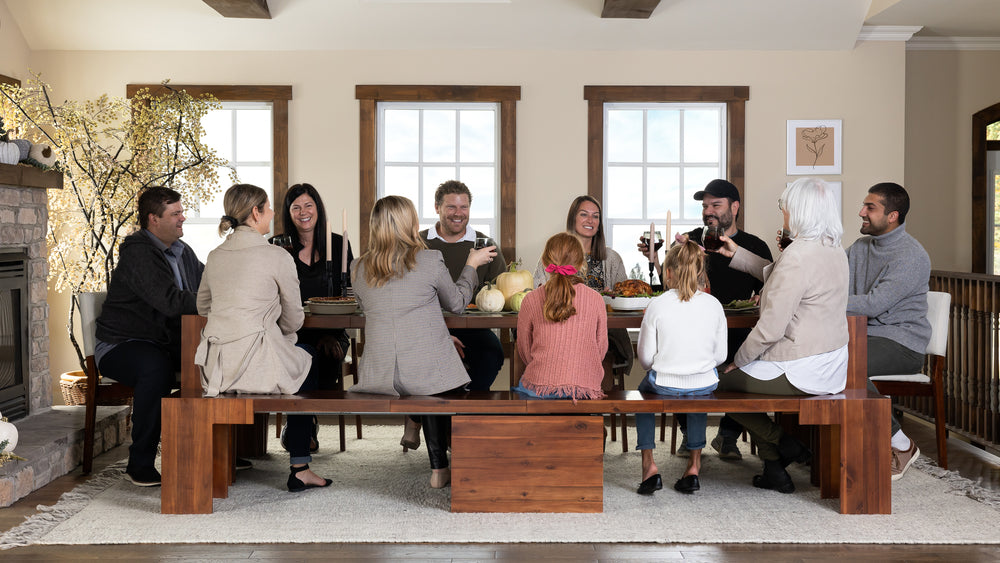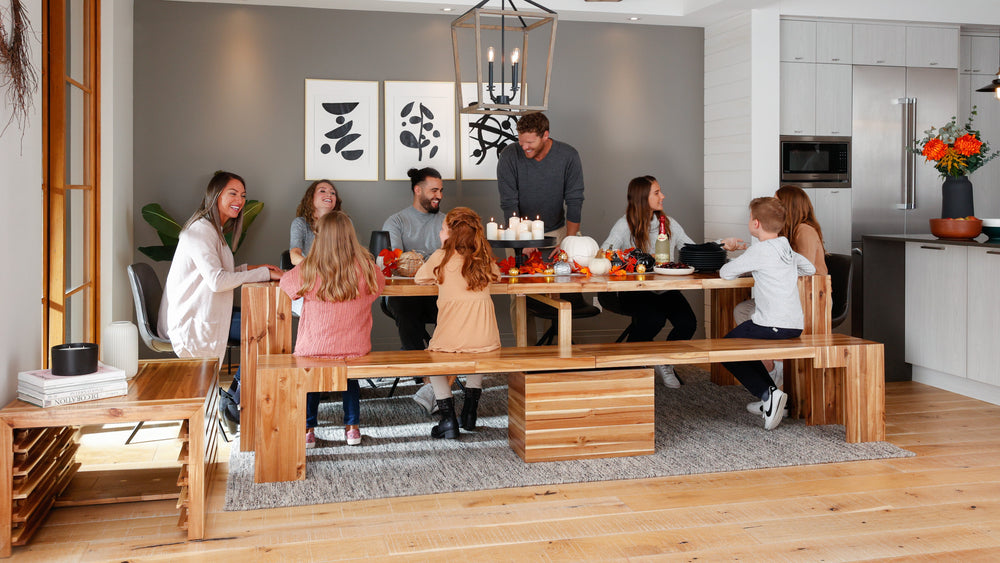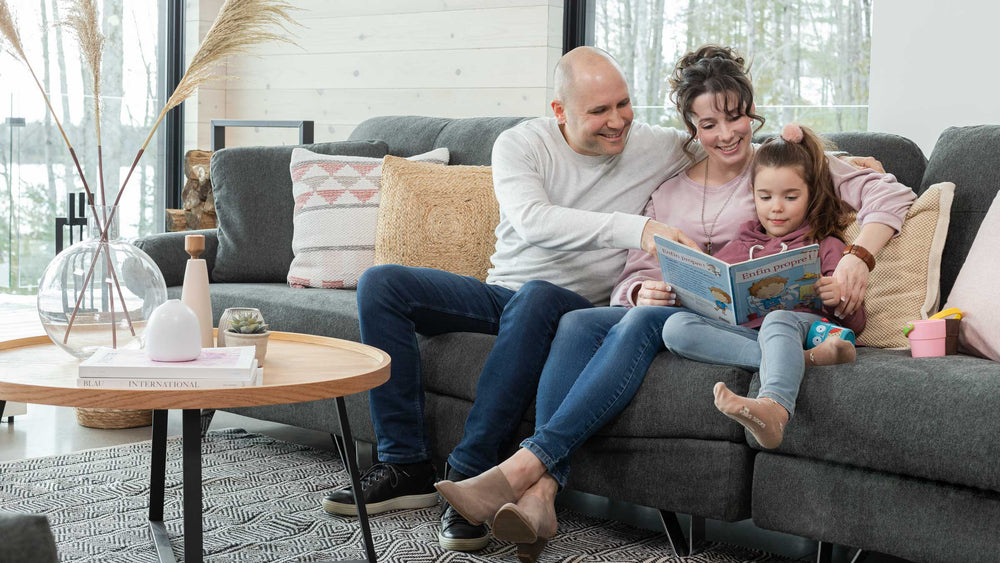
Sideboard vs. Buffet vs. Credenza: Decoding the Differences

July 04, 2024
When it comes to furnishing your dining room, living room, or home office, the choice between a sideboard, a buffet, and a credenza can be challenging. While these pieces of furniture share similarities, they serve distinct purposes and come in various styles. Understanding the main differences between these terms can help you select the perfect piece of furniture for your space.
Defining Sideboards, Buffets, and Credenzas
Though similar and often used interchangeably, these words each have their own specific meanings.
Sideboards
The sideboard, originally designed to store things and display dishes, is a staple in dining rooms. Sideboards are long, low-storage units with cabinets and drawers, making them ideal for holding table linens, serving dishes, and other dining room essentials. Sideboards from Transformer Table is also designed to store extra panels for your extendable dining room table. Sideboards usually have a flat top surface that can be used to serve food during gatherings.

One of the main differences between a sideboard and other pieces of furniture lies in its legs. Sideboards often have shorter legs, giving them a sturdier and more grounded appearance. This makes them a perfect piece for rooms where stability and substantial storage are key.
Buffets
Buffets and sideboards are often used interchangeably, but there are subtle distinctions. Buffet tables are a type of sideboard intended specifically for the dining room. They tend to have longer legs than sideboards, providing a taller surface that’s perfect for serving food. The main purpose of sideboards and buffet tables is to serve as an extended surface for dining spreads, where guests can serve themselves various dishes.
Buffets are also equipped with storage features such as cabinets, shelves, and drawers similar to sideboards. However, their design typically emphasizes the serving surface more, making them slightly taller and sometimes narrower than sideboards.
Credenzas
The term credenza originates from Renaissance Italy and was initially referred to as a test for tasting food for poison. Today, a credenza is a versatile piece of furniture that can be used to store anything in various rooms, including dining rooms, living rooms, and home offices. Credenzas are typically lower and longer than both sideboards and buffets, with very short legs or even no legs at all. This design makes them suitable as media consoles or TV stands in living spaces.
Credenzas often feature a mix of cabinets and open shelving, providing a balance of storage and display options. They are ideal for storing items that need to be dusted regularly, such as books, media equipment, or decorative pieces.
Functional and Aesthetic Differences
Dining Room Use
In dining rooms, sideboards and buffets are essential for both storage and serving functions. Sideboards are perfect for storing table linens, dishes, and other dining room essentials, while their tops can be used for serving food during gatherings. Buffets, with their taller profiles, are more focused on providing a serving surface, making it easier for guests to serve themselves.
Credenzas, while not traditionally associated with a dining room, can also serve a useful role. Their lower height makes them suitable for storing items that don’t need frequent access, and their wide surface can be used to display dishes or decorative items.
Living Room and Other Spaces
In living areas, credenzas often take on the role of a media console or a TV stand. Their design allows them to blend seamlessly with other furniture pieces while providing ample storage for media equipment and accessories. Sideboards can also be used in living areas, offering extra storage and a surface for decorative displays.

Buffets are less common in living areas but can be used as console tables in hallways or entryways. Their height and design make them ideal for displaying decorative items and providing a convenient surface for keys, mail, and other everyday items.
Office Use
In-home offices, credenzas are invaluable for their storage capacity and surface area. They can hold office supplies, files, and equipment, while their top surface can serve as an additional workspace. Sideboards and buffets can also be repurposed for other office furniture use, depending on the available space and storage needs.
Style and Design Preferences
The choice between a sideboard, buffet, and credenza often comes down to personal style and design preferences. Each piece offers a unique look and functionality that can enhance the aesthetic of your home.
Sideboards
Sideboards come in a variety of styles, from traditional to modern. Their versatility makes them suitable for various decorating schemes. Whether you prefer a rustic wooden sideboard with intricate details or a sleek, minimalist design, there’s a sideboard to match your taste. Sideboards can be on the pricey side of things but you can often score great deals by keeping an eye out for furniture sales.
Buffets
Buffets are designed to complement dining room furniture, so their styles often coordinate with dining tables and chairs. You can find buffets in classic designs or in contemporary styles with clean lines and modern finishes. The key is to choose a buffet that harmonizes with your dining room furniture.
Credenzas
Credenzas offer the most flexibility in terms of style and placement. Their lower profile and varied storage options make them adaptable to different spaces and functions. From mid-century modern credenzas with tapered legs to industrial designs with metal accents, there’s a credenza to suit every taste and need.
Practical Considerations
When choosing between a sideboard, buffet, and credenza, consider the following practical aspects:
Storage Needs
Evaluate your storage needs before making a decision. If you require extensive storage for dining room essentials, a sideboard or buffet may be the best choice. For general storage and media organization, a credenza might be more suitable.

Space Availability
Measure the available floor space in your room to ensure the furniture piece will fit comfortably. Sideboards and buffets can be quite large, so they require ample room. Credenzas, with their lower height, can fit into tighter spaces without overwhelming the room.
Functionality
Think about how you intend to use the furniture piece. A buffet is ideal if you need a surface for serving food during gatherings. A sideboard or credenza can be more functional for versatile storage and display.
Versatility in Modern Homes
In today's homes, the versatility of sideboards, buffets, and credenzas has expanded beyond their traditional roles, reflecting evolving lifestyles and design preferences. These furniture pieces can adapt to various functions and settings, making them invaluable additions to any living space.
Sideboards in Multifunctional Spaces
Sideboards are no longer confined to dining rooms. In open-concept homes, sideboards can seamlessly transition from one area to another, serving multiple purposes.
In a combined living and dining area, a sideboard can act as a room divider, providing storage and display space while defining different functional zones.
In bedrooms, sideboards can offer additional storage for clothing, linens, or personal items.
Their substantial surface area is perfect for displaying photographs, decorative pieces, or even a television, making them a stylish alternative to traditional dressers.
Buffets Beyond Dining
While buffets are designed with dining rooms in mind, their utility extends far beyond. In living rooms, a buffet can serve as a console table, offering a stylish surface for decorative accents and practical storage for board games, blankets, or media devices.
Credenzas in Contemporary Living
In smaller apartments or studio spaces, a credenza can serve as a multifunctional piece that combines storage, display, and workspace. Its low profile makes it a perfect fit under windows or narrow hallways, maximizing the available space without overwhelming the room.
Creating a Cohesive Look
Consistent Materials and Finishes
Choose furniture pieces with consistent materials and finishes to ensure a unified aesthetic. If you have a wooden extendable dining room table from Transformer Table, consider a sideboard or buffet with a similar wood finish. For a modern look, opt for pieces with clean lines and matching metal accents.

Coordinated Colors
Harmonize your furniture with a coordinated color palette. Neutral tones like white, black, or gray offer versatility and can be easily complemented with colorful accents. If you prefer a bold look, select pieces in coordinating shades that enhance your overall decor scheme.
Care and Maintenance
Regardless of the type of furniture you choose, proper care and maintenance are essential to keep it looking its best. Here are some tips for maintaining sideboards, buffets, and credenzas:
Dusting
All three types of furniture should be dusted regularly to prevent the buildup of dirt and grime. Use a soft, dry cloth to dust the surfaces, and avoid using harsh chemicals that can damage the finish.
Cleaning
For deeper cleaning, use a damp cloth with a mild soap solution to wipe down the pieces of furniture. Be sure to dry the furniture thoroughly to prevent moisture damage. For wooden pieces, use furniture polish or wax to maintain the finish and protect the wood.
Heat Resistance
When using sideboards, buffets, or credenzas to serve your guests, ensure they have a heat-resistant top to prevent damage from hot dishes. Use trivets or heat pads to protect the surface and maintain the integrity of the furniture.
Understanding the distinctions between sideboards, buffets, and credenzas is essential for selecting the right piece of furniture to enhance your home. Each type offers unique benefits and can serve various purposes, from dining room storage and serving to living room display and media organization, to additional workspace in home offices.
By carefully considering these aspects, you can choose the perfect sideboard, buffet, or credenza to complement your home’s style and meet your specific needs, creating a cohesive and inviting space that reflects your taste and enhances your living experience.


